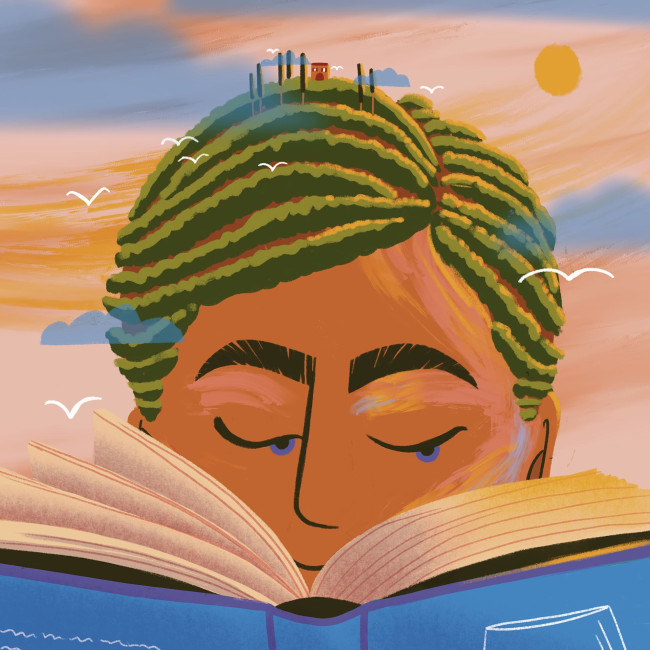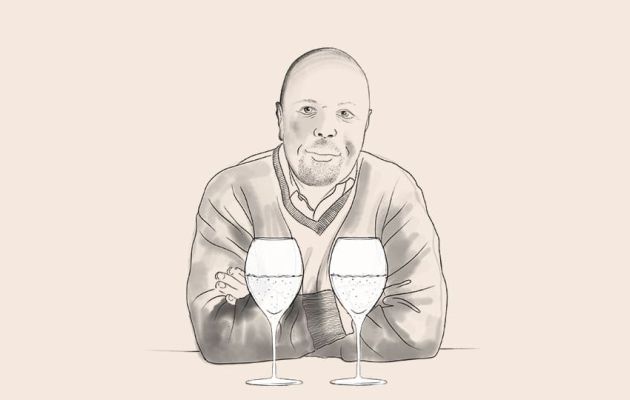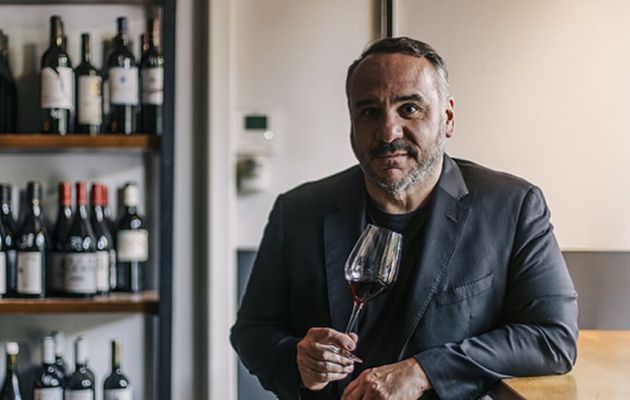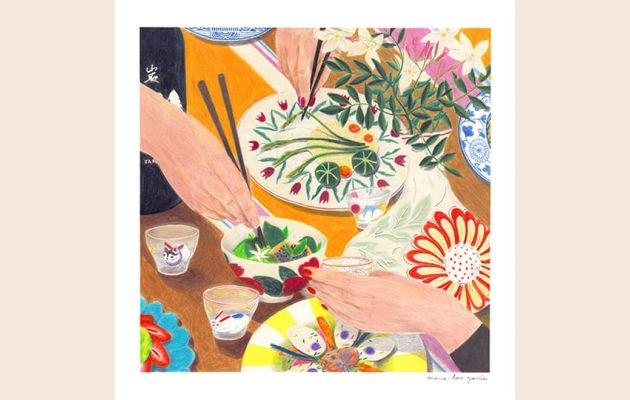
[ WINES ]
The wines at the core of my novel Wine People.
by Michelle Wildgen, United States
“Wine People is about two women who work for a boutique wine importer. They go from rivals to reluctant allies to friends, and their path is never assured. They both have a passion for wine, but they arrived in the wine industry in very different ways: Thessaly was born to it and Wren clawed her way in.
I don’t pretend to be a wine expert. I’m simply an enthusiastic amateur who always chooses wine over any other available drink, and who loves thinking about its makers and sellers enough that I wrote a novel about them. I gladly drink anything interesting, depending on the season and the food, and so do my characters.
I wanted to write about this world because I’ve held onto a little memory for twenty-some years, ever since I worked at a restaurant called L’Etoile right after college. L’Etoile was often called the Chez Panisse of the Midwest, and it was big on grower Champagne and German and Austrian wines that went well with its midwestern-sourced ingredients—it was the same latitude in Wisconsin and in Europe, the chef and owner Odessa Piper used to point out.
It was there that I first began thinking about where these wines came from and what had to happen before they were poured into a glass. The memory that spurred me was only a mention, really—a friend noted that the German winemakers she’d visited were farmers at heart, and I never forgot it. Madison, Wisconsin, where I lived then and later returned, was farming country too, and suddenly wine was a fascinating contradiction to me: a high-end luxury and the difficult work of agriculture. Fiction is born of contradictions and tensions, so I thought of this comment when I started talking to wine professionals. Next thing I knew, I was hooked.
There are too many wines in the novel to list them all, so I’ll simply name a few of the pivotal ones and the role they play in the story with the main characters, Wren and Thessaly.”
01.
Riesling Spätlese
“When I was talking with winemakers for research, Jim Prosser of JK Carriere wines in Oregon told me about a particular memory: he was tasting with a winemaking family that included the very old retired winemaker, who was sitting in a corner, mute and uninterested—until someone opened a bottle of the last vintage he’d made. When the scent of that bottle reached the old man, he came to life all over again. That’s what happens on a trip to Germany with a winemaker nearing the end of his career and life: they open a Riesling Spätlese from the year before the winemaker’s wife died, and the olfactory prompt transforms the room. Asked what his late wife said of this vintage, the winemaker replies, “She told me to double the price.”
02.
Grower champagne
“One of the crucial early scenes in the book takes place at a venerable French estate where, after the importers have done the work of tasting and selecting the latest vintages, they open a bottle of aged Champagne the color of an old bronze coin, the kind that doesn’t make its way to the United States. This is not one to consider for import, simply one to share--and a reminder of who these Americans are dealing with. To everyone’s surprise, the French host offers a second precious pour of the stuff not to the flashier and more outgoing Thessaly, but to quiet Wren, who will turn out to be formidable after all.”
03.
French Rosé
“OK, so this one is a bit of a cheat. Wren’s first wine memory is not a dry Provençal rosé but a cheap box of pink wine her mother opens after her never-sober father has finally, really left. It was the first wine Wren had ever seen wine as a child, and she was struck by the stemware, the sharing, and the ritual of it. Crappy wine or not, the memory shaped her appreciation for the drink. It was also the moment she knew her family was changed for good.”
04.
1985 Chateau Haut-Brion
“Every wine lover has that first taste that opened the door, and this was Wren’s, offered to her when a table at the restaurant where she works saves a taste for the staff. Have I ever tasted this venerable Bordeaux vintage? I have not. But it seemed like the kind of thing that would enrapture the right person at the right time. I figured I should go big for this one: it has to change her life.”
05.
Carignane
“Many years ago at a trendy Italian restaurant in New York City, my husband and I had a bottle of some Sicilian red, one that was so bright and punchy that all we could say was, That’s the happiest wine we’ve ever had. But what was the varietal again? That, I could never recall. After some research, I made the educated guess that it was a Sicilian Carignane. I let Thessaly share a taste of this at the invitation of the man who becomes her future employer.”
06.
Pinot Blanc and Gewürztraminer
“Thessaly pulls out this little party trick to impress a date who has tried to free her from the expectation to offer wine pairings by choosing a Thai restaurant. But of course she knows, as any self-respecting wine professional does, exactly what to bring.”
07.
Grüner Veltliner
“For years, this was how I evaluated a wine store. If they carried a few grüners, I figured they were at least trying. The varietal has become much more popular over the last few decades, so I no longer regard it the same way, but if it is being offered I can never resist ordering it. There is a key scene in the novel when Wren uncharacteristically knocks back a full bottle of it—you’ll have to trust me when I say it is an act of affection, not only for the wine but for her companion.”
08.
Anything from Desparada Wines, Paso Robles, California
« Le rêve que nourrit Thessaly est de franchir le cap que sa famille n'a jamais osé : tandis qu’ils cultivent les raisins, elle souhai“Thessaly’s dream is to take the step her family chose not to: they grow the fruit, but she wants to make wine too. But making wine in exclusive Sonoma, where she grew up, doesn’t feel quite like her, and for years she does not know what might be right. It’s only when she visits Tin City in Paso Robles that she encounters a version of winemaking that she could see herself doing. My friend and writer Sara Roahen took me to Vailia From’s Desparada tasting room in Tin City on a research trip in 2019, and Desparada became the model for the place that finally allows Thessaly to envision her own future. I’d never seen a tasting room quite like it, feminine and modern and old world at once, and every wine was a surprise. This was it.”
Author - Michelle Wildgen
Michelle Wildgen is the author of the novels Wine People, You’re Not You, But Not For Long, and Bread and Butter, and the editor of the food writing anthology Food & Booze. Her work has appeared in O Magazine, the New York Times Book Review and "Modern Love” column, Best Food Writing, and other anthologies and literary journals. A former executive editor with the award-winning literary journal Tin House, she is a freelance editor and creative writing teacher in Madison, Wis.
Illustration - Elodie Flavenot
Elodie is a travelling artist and illustrator whose inspiration comes from nature and the cultures that surround us. Her creations come to life on a tablet or in her travel journeys during her explorations. With a heightened sense of colour and texture, she enjoys playing with various types of medium to translate an idea or a recollection into an image, or even specifications to be complied with, adding a dash of poetry.
Prolong the experience
Discover the profiles of creative and influential personalities explaining their relationship with wine, the secrets of sommeliers or legendary establishments.
When you subscribe to the magazine, your email address is only used to send you our content newsletter. You can unsubscribe at any time by clicking the unsubscribe link included in each newsletter. To find out more about management of your data and your rights, click here .



